
Heretic is a dark fantasy first-person shooter video game released in December 1994. It was developed by Raven Software and published by id Software through GT Interactive.

Hexen: Beyond Heretic is a fantasy first-person shooter video game developed by Raven Software and published by id Software distributed through GT Interactive on October 30, 1995. It is the indirect sequel to 1994's Heretic, and the second game in Raven Software's "Serpent Riders" trilogy, which culminated with Hexen II. The title comes from the German noun Hexen, which means "witches", and/or the verb hexen, which means "to cast a spell". Game producer John Romero stated that a third, unreleased game in this series was to be called Hecatomb.

Star Wars Jedi Knight II: Jedi Outcast is a 2002 first- and third-person shooter video game. The Microsoft Windows was developed by Raven Software, the Mac OS X version by Westlake Interactive, and the Xbox and GameCube versions by Vicarious Visions; most versions were published by LucasArts, with only the Mac version published by Aspyr. The game is a sequel to 1997's Star Wars Jedi Knight: Dark Forces II, and the third main installment in the Star Wars: Jedi Knight series. The single-player campaign, set in the fictional Star Wars expanded universe two years after the Mysteries of the Sith expansion for Dark Forces II, follows returning protagonist Kyle Katarn, a mercenary working for the New Republic and former Jedi who cut his connection to the Force. Katarn must return to his Jedi ways to stop a branch of the Imperial Remnant led by the Dark Jedi Desann from empowering their army with the Force.
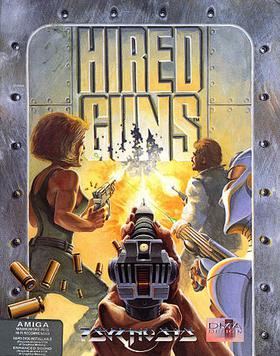
Hired Guns is a role-playing video game developed by DMA Design for the Amiga and IBM PC compatibles and published by Psygnosis in 1993. In the year 2712, players control a team of four outlaw mercenaries, chosen from a pool of twelve, attempting to destroy illegal bio-engineered organisms using a thermonuclear explosion. The game shows four simultaneous first-person perspective viewpoints and allows up to four players to play together. Players must manage their characters' inventory and carrying capacity, and adapt to various environmental challenges like underwater areas.

Star Wars: Dark Forces is a first-person shooter video game developed and published by LucasArts. It was released in 1995 for MS-DOS and Macintosh, and in 1996 for the PlayStation. The story is set in the fictional Star Wars expanded universe and begins shortly before the original Star Wars film, before flashing forward to a year after the film's events. The game's protagonist and playable character is Kyle Katarn, a mercenary working on behalf of the Rebel Alliance who discovers the Galactic Empire's secret Dark Trooper Project, which involves the development of a series of powerful new battle droids and power-armored stormtroopers.
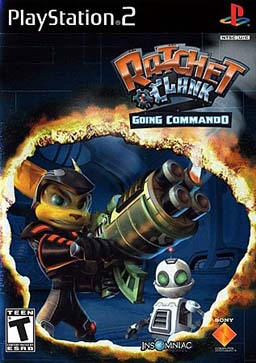
Ratchet & Clank 2: Going Commando, known as Ratchet & Clank 2: Locked and Loaded in Australia and most PAL countries, is a 2003 third-person shooter platform video game developed by Insomniac Games and published by Sony Computer Entertainment for the PlayStation 2. Ratchet & Clank: Going Commando is the second game in the Ratchet & Clank franchise, following Ratchet & Clank. David Kaye reprises his role as Clank while James Arnold Taylor replaces Mikey Kelley as Ratchet.
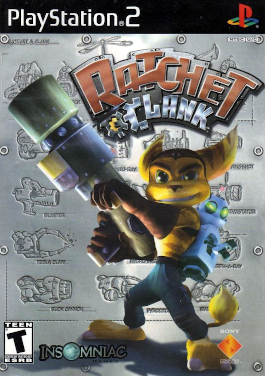
Ratchet & Clank is a third-person shooter platform video game developed by Insomniac Games and published by Sony Computer Entertainment for the PlayStation 2 in 2002. It is the first game in the Ratchet & Clank series.

Mercenaries: Playground of Destruction is an action-adventure video game developed by Pandemic Studios and published by LucasArts for PlayStation 2 and Xbox. The game features an open world environment, with elements of potential stealth gaming and reputation-based social mechanics, and is set during a fictitious multi-national military action in North Korea, in an alternate history version of the year 2007. The player gains control of one of three mercenary main characters and completes contracts in the war-torn country for profit and to prevent a nuclear war. Critics gave favorable reviews to the game, in particular praising its focus on explosive mayhem.

Mission: Impossible is an action-adventure video game developed by Infogrames and loosely based on the 1996 film of the same name. It was originally released for the Nintendo 64 video game console in 1998. In the game, the player assumes the role of Ethan Hunt, an Impossible Missions Force (IMF) agent who must clear his name after a mole has infiltrated the IMF team. The game features 20 levels where the player must complete several mission objectives with the use of numerous high-tech gadgets.

Armored Core: Project Phantasma is a 1997 third-person shooter mecha video game developed by FromSoftware for the PlayStation. Project Phantasma is the second entry in the Armored Core series and a prequel to the original Armored Core. The game was not released in Europe.

Armored Core: Last Raven is a 2005 mecha-based vehicular combat game developed by FromSoftware. It is part of the Armored Core series and is a direct sequel to Armored Core: Nexus (2004). The game was originally released for the PlayStation 2 and was ported to the PlayStation Portable in 2010. Gameplay remains largely unchanged from the game's predecessors and is centered around piloting a large mech in combat missions for various clients. The game is also notable for being the debut project of future FromSoftware president Hidetaka Miyazaki.
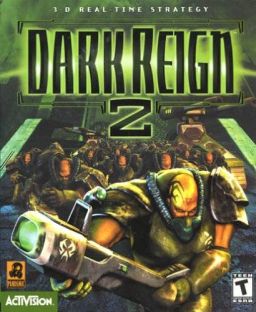
Dark Reign 2 is a 3D real-time strategy video game developed by Pandemic Studios and released by Activision in 2000 for Microsoft Windows. A prequel to Dark Reign: The Future of War and its expansion pack, Dark Reign 2's storyline focuses on what came before the conflict in the first Dark Reign.

Ratchet & Clank is a series of action-adventure platform and third-person shooter video games created and developed by Insomniac Games and published by Sony Interactive Entertainment for PlayStation consoles, such as PlayStation 2, PlayStation 3, PlayStation 4, and PlayStation 5, with the exclusion of Size Matters and Secret Agent Clank, which were developed by High Impact Games for the PlayStation Portable. The series was exclusive to Sony platforms until Rift Apart received a Windows port in 2023. Despite this however, the intellectual property is still owned by Sony Interactive Entertainment. An animated feature film adaptation was released on April 29, 2016.
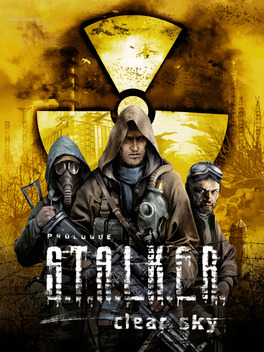
S.T.A.L.K.E.R.: Clear Sky is a 2008 first-person shooter survival horror video game with role-playing elements. It was developed by GSC Game World and published by Deep Silver as a prequel to S.T.A.L.K.E.R.: Shadow of Chernobyl.
Star Wars: Jedi Knight is a series of first- and third-person shooter video games set in the fictional Star Wars expanded universe. The series focuses primarily on Kyle Katarn, a former Imperial officer who becomes a mercenary working for the Rebel Alliance, and later a Jedi and instructor at Luke Skywalker's Jedi Academy. While the first game is set a year after the events of A New Hope, the sequels take place in the decade following Return of the Jedi.
Red Faction is a series of shooter video games developed by Volition and owned by Plaion. Originating in 2001, the Red Faction games have spanned Microsoft Windows, macOS and consoles, including the PlayStation 2, GameCube, Xbox, PlayStation 3 and Xbox 360. Original developers Volition have retained the rights to the series since 2020, with no updates provided on whether a future fifth game is in the works or may be so in the future.

A first-person shooter (FPS) is a video game centered on gun fighting and other weapon-based combat seen from a first-person perspective, with the player experiencing the action directly through the eyes of the main character. This genre shares multiple common traits with other shooter games, and in turn falls under the action games category. Since the genre's inception, advanced 3D and pseudo-3D graphics have proven fundamental to allow a reasonable level of immersion in the game world, and this type of game helped pushing technology progressively further, challenging hardware developers worldwide to introduce numerous innovations in the field of graphics processing units. Multiplayer gaming has been an integral part of the experience, and became even more prominent with the diffusion of internet connectivity in recent years.

Mercenaries is a video game franchise published by LucasArts and developed by Pandemic Studios. As of 2024, there are two Mercenaries games available.

Fuse is a four-player cooperative third-person shooter video game developed by Insomniac Games and published by Electronic Arts for PlayStation 3 and Xbox 360. The game was announced as Overstrike before it was rebranded in August 2012. It was released on May 28, 2013 in North America, May 30, 2013 in Australia and on May 31, 2013 in Europe. Fuse was both a critical and commercial failure for Electronic Arts.

Heat Signature is an action stealth video game developed and published in 2017 by Suspicious Developments, the studio behind 2013's Gunpoint. The player plays as a mercenary who takes on missions around a procedurally generated galaxy in order to liberate space stations. Heat Signature launched for Microsoft Windows on September 21, 2017.


















